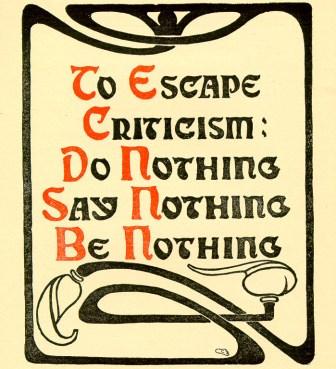No one outside of a theatre program can truly understand all the hard work that goes into a production. Allow me to facilitate your understanding:
First a director sits down and chooses a play. A lot of thought goes into this as a director must know the limitations of their theatre space, but be willing to push the boundaries as well. Once the director has chosen the piece, the production process can begin. The director will now hold auditions and choose actors for the piece. From there parts are chosen and rehearsals can begin. This is usually about two months before the opening night, perhaps even longer for larger scale productions. Technician interviews will be held as well then the technical process can begin as well. Tech encompasses everything that the actors are not in control of, namely all of the lighting, sound effects, set design, costuming, makeup design, props work, and public relations. Each aspect of tech has its own crew, usually consisting of about seven people, a crew chief, and a supervisor. Tech begins as soon as it can for they will need all the time they can get to bring the production to life.
Let me put the tech aspect into perspective for you. I worked on a show called "You Can't Take It With You" The set had three full size walls, a hallway, stairs, a bay window, a dining room table, a couch, a desk and chair, a china hutch, potted planrts, and a xylophone, and a snake solarium. Remember that all of the walls had to be created, painted and detailed. There were over 150 individual props which have to either be found or fabricated. A full lighting plot was used that encompassed over 70 lighting instruments, all of which had to be hung, focused, and colored. The cast had 18 characters, and three acts, all occuring on different days, That means that characters appearing in multiple acts needed two or three different costumes. Imagine that with a cast of 18! This show needed close to 30 costumes. Also makeup design for 18 different people was needed. Now all we need is an audience, that's where P.R. comes in. It's the P.R. crew's job to make a logo, print flyers and create general advertising for the production. Also, thety are in charge of creating the playbills for the performances. That's only tech, where are our actors?
While the tech is going on, rehearsal will be in full swing as well. The actors need lots of time to memorize all of their lines. In a normal two hour drama, a lead can have as many as 250 lines!! On top of that, all the actors need time to analyze their parts and create a character that matches the part. Actors also have to learn and memorize all of the movement, or blocking, that goes along with the scenes, as well as entrances, exits, when to change costumes, and when to grab specific props from backstage.
Performances are the most rewarding part of the process. Everone, actor and techie alike are on full alert. Oh yeah, a performance doesn't just include the actors performing their lines. There's at least twenty technicians backstage running around who are there to move scenery, help with costume changes, run the lights, run the sound effects, move props, run foley, and run spotlights.
Hard work? The hardest. Being a part of a Theatrical Production is one of the most fun, challenging, and rewarding things a person can participate in. I'm sure Ijust made it sound very very scary, but I highly recommend being in at least one in your life. You won't regret it, I promise.










